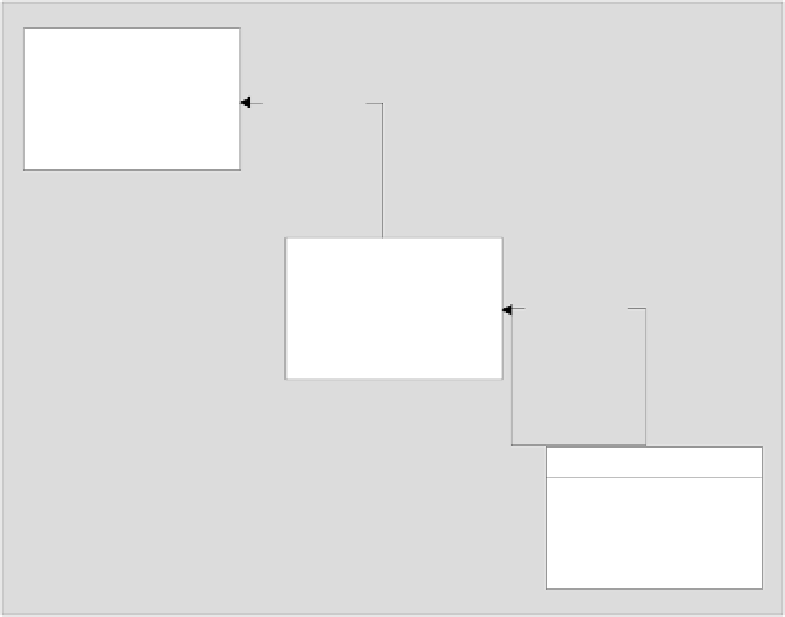Java Reference
In-Depth Information
class A
direct superclass of B
indirect superclass of C
derived from
class B
direct subclass of A
direct superclass of C
derived from
class C
direct subclass of B
indirect subclass of A
This shows just three classes in a hierarchy, but there can be as many as you like.
Let's consider a more concrete example. We could define a class
Dog
that could represent a dog of any kind.
class Dog {
// Members of the Dog class...
}
This might contain a data member identifying the name of a particular dog such as "Lassie" or "Poochy"
and another data member to identify the breed, such as "Border Collie" or "Pyrenean Mountain Dog".
From the
Dog
class, we could derive a
Spaniel
class that represented dogs that were spaniels:
class Spaniel extends Dog {
// Members of the Spaniel class...
}
The
extends
keyword that we use here identifies that
Dog
is a base class for
Spaniel
, so an object of type
Spaniel
will have members that are inherited from the
Dog
class, in addition to the members of the
Spaniel
class that appear in its definition. The breed would be "spaniel" for all instances of the class
Spaniel
although in general the name for each spaniel would be different. The
Spaniel
class might have
some additional data members that characterize the specifics of what it means to be a spaniel. We will see in
a moment how we can arrange for the base class data members to be set appropriately.









